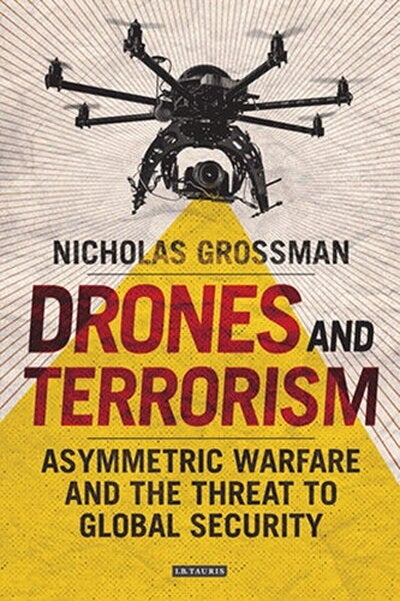
University of Illinois Urbana-Champaign political science professor Nicholas Grossman is the author of “Drones and Terrorism: Asymmetric Warfare and the Threat to Global Security” and specializes in international relations. Grossman spoke with News Bureau business and law editor Phil Ciciora about “Operation Spiderweb,” Ukraine’s expertly plotted drone attack inside the Russian mainland.
Did Ukraine’s unprecedented drone attack deep within Russia essentially redefine asymmetric warfare going forward?
Not really. It’s significant, but not war-redefining.
Many, perhaps all, of the drones Ukraine used in this operation did not launch from Ukraine and fly into Russia. Ukrainian operatives smuggled them in and launched close to the targets. The maximum range of small drones varies by model, but it’s almost always less than 100 kilometers, and usually under 10 km. It took months for Ukraine to get everything into position for one big surprise attack.
So while it does show how a fighting force can weaken a larger adversary by taking out expensive military equipment with relatively cheap methods, it likely requires state-level resources. Insurgent and terrorist groups would find it very difficult to pull off something this big. Ukraine’s “Operation Spiderweb” is more akin to a large intelligence/sabotage operation than an easily repeatable military strike.
Is this a potential turning point in the Russia-Ukraine war?
Probably not a turning point. Ukraine’s attack will reduce Russia’s ability to fire projectiles at Ukrainian military positions and civilian targets, such as power plants, at least for a time, but not eliminate it. The attack shows the Russians that Ukrainian forces can get to them, but Ukraine has shown that multiple times already, albeit not at this scale.

Russia will have to make some tough decisions about repurposing strategic bombers from its nuclear deterrent to attacking Ukraine, but Russia has been operating beyond capacity for over two years now, pouring resources into trying to conquer Ukraine while leaving itself more vulnerable elsewhere.
If anything, Ukraine’s big drone attack undermines recent American efforts to end the war. The main thrust of the Trump administration’s “peace” plan has been to pressure the Ukrainians to surrender and give Russia what it wants, absurdly blaming the victim for the war Russia started, and demanding nothing from the aggressor besides an end to attacks. Trying to get Ukrainian president Volodymyr Zelensky to concede to Russia, U.S. president Donald Trump chastised Zelensky at a February 2025 White House meeting with “you don’t have the cards,” as if Russia’s victory is inevitable, so Ukraine should spare themselves purposeless pain.
But Ukraine has proven otherwise through more than three years of war, and the drone attack shows they have some big cards up their sleeve. They’re not quitting and accepting Russian domination, even if Trump would like them to.
Will this lead to further escalation by the Russians in an effort to save face after being thoroughly blindsided by Ukrainian ingenuity?
Russia will likely do something noticeable and call it retaliation, but it probably will not be a significant escalation because Russia has already been doing everything it can think of to defeat Ukraine. If the Russians had additional methods to advance their cause, they would have deployed them already, not sit on them for over three years while taking hundreds of thousands of casualties.
How alarming should this be for U.S. defense policymakers, who were already concerned about drone overflights of U.S. military bases?
U.S. defense policymakers should take the example of Ukraine’s drone attack seriously, and adjust to the changed technological environment, but the concerns aren’t new. I’ve been warning about the asymmetric threat of small drones for over a decade, including in my 2018 book “Drones and Terrorism,” as have others.
U.S. forces stationed in Iraq, Syria and elsewhere have faced small drone attacks for years. In January 2024, amid Middle East tensions over the war in Gaza, militants used small drones to kill three American service members at a base near the Jordan-Syria border. A surprise mass attack with small drones, larger than Ukraine’s attack on Russia, could damage the U.S. military in a 21st-century version of Pearl Harbor.
That said, it’s important to keep these things in perspective. The U.S. military is larger, stronger and more widely dispersed than Russia’s, especially now that Russia has struggled through years of war. American forces already thwart most drone attacks on U.S. military installations abroad. Any coordinated attack on the scale of Ukraine’s would take time and personnel to secretly set up, and they’d have to do it without the cover of armed conflict, leaving many opportunities to get caught.
It’s a vulnerability the U.S. should work to address by developing more physical and electronic countermeasures, and further small drone capabilities of its own. But it’s not a cause for panic.
Will Ukraine’s gambit embolden malign actors around the world and potentially jeopardize U.S interests at home and abroad?
Fighting in Ukraine has showcased the value of drones in interstate warfare, as Russia and especially Ukraine have innovated and incorporated large and small drones into their strategies more than in any previous large-scale conflict. Every state military and nonstate militant group should be taking lessons from it.
But Ukraine’s Operation Spiderweb probably won’t do much to embolden malign actors, since the size and timing make a similar attack hard to pull off and, without the pressures of foreign invasion that Ukraine is facing, few will think it’s worth the risk.


